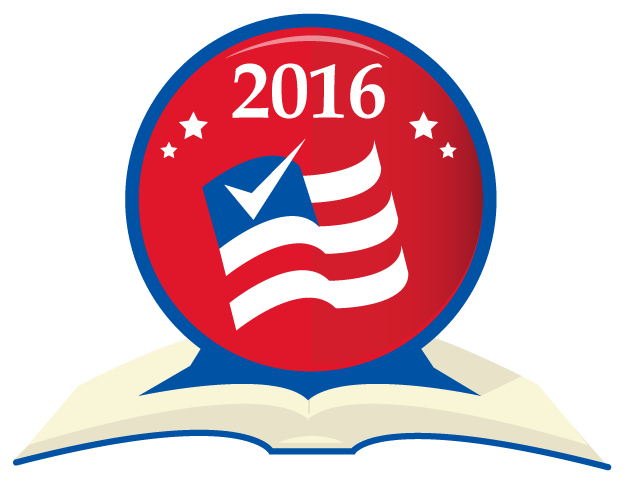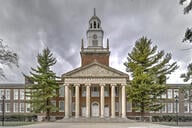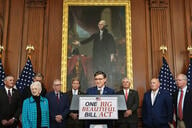You have /5 articles left.
Sign up for a free account or log in.
Hillary Clinton's plan to eliminate public college tuition for families with incomes up to $125,000 would lift enrollment at two- and four-year public institutions by between 9 and 22 percent -- in part by draining as many as 15 percent of students away from private nonprofit colleges, a new analysis predicts.
The study by officials at Georgetown University's Center on Education and the Workforce is, they acknowledge, no more than a "best informed guess" given the "unprecedented" nature of the proposal and the "sketchy" information the campaign has released publicly so far.
But the findings by the center -- a well-respected and largely independent source of policy analysis -- will likely provide fodder to supporters and critics of the Clinton plan alike.
Advocates of the candidate's proposal will be cheered by the predictions that it would spur enrollment by hundreds of thousands of students who are now deterred by the price of college (or at least perceive it to be out of their reach). Officials at private colleges will be alarmed by estimates that as many as one in seven students at their institutions will be lured to public colleges by the elimination of tuition for many students.
And those without a dog in the fight might be just plain interested in other findings in the center's analysis -- including the assertion that the Clinton plan could diminish racial and socioeconomic diversity at the most selective public institutions by increasing the number of students vying for admission slots there.
Few Precedents
The center's director, Anthony P. Carnevale, said in an interview that numerous people had asked the center for projections of the impact of the Clinton plan -- or offered their own, most of which, he said, were "wildly high." So the center produced its own, which he calls a "lowball estimate."
The biggest obstacle to crafting an estimate is "the lack of comparable previous policy changes," the report says. While past policies and research have clearly shown that enrollments are sensitive to price, most have made only "marginal" changes to price (usually going up). "We posit that the effects of making college 'free' would be much more powerful than marginal changes in price, up or down. Economists and marketers have grasped the powerful behavioral lure of making something 'free.'"
For past evidence, the report cites the Tennessee Promise program, which boosted enrollments at community colleges by about 20-25 percent in the first year. (Terry Hartle, a senior vice president at the American Council on Education, offered up as another example the City University of New York's 1969 shift to open admissions -- CUNY was already free -- which produced a 28 percent enrollment gain in two years.)
The other difficulty in offering predictions is that much remains uncertain about how the program would work and how lawmakers might implement it. The numbers in the Georgetown estimate that follow are designed to show the impact at "full implementation," which would probably be over a period of several years, said Martin Van Der Werf, associate director of editorial and postsecondary policy at the center.
The top-line finding is that Clinton's plan -- which meshed her initial "debt-free" college plan with the free college plan of her Democratic primary challenger, Bernie Sanders -- would increase enrollment at public colleges and universities by between 9 and 22 percent, or 16 percent as a median. Given that there are 16 million students enrolled in public two- and four-year colleges now, that could mean an additional 2.5 million enrollees at the median estimate.
Roughly three-quarters of that increase would result from people entering higher education for the first time, many of them because making tuition simply and clearly "free" (as opposed to providing more financial aid or cutting prices modestly) would break through the information and other barriers that deter many on the margins from going to college.
Many of those new students, the Georgetown analysis predicts, would flow to community colleges and open-access four-year institutions, which would see their enrollments surge by 13 to 31 percent (23 percent median estimate). That's partly because those institutions tend to have more capacity and turn away few if any students, because many of the students who are entering higher education mainly because it is free could not qualify for admission at more selective institutions, and because of the "cascading effect" that would occur as more students flood more selective institutions and fill spots that may now go to less qualified students.
"In making these projections, we assume that selective public institutions will not increase capacity, or will increase it very little," the report stated. (Carnevale said in the interview that he assumed that many midlevel public institutions might use such a policy change to become more selective, not to significantly expand enrollments.)
"The most selective colleges and universities would have their pick of the most qualified and highest-achievement students from their expanded pool of applicants. Then, the midtier public universities would have their pick of the students who were well qualified but couldn’t get into the flagships," the report stated. "The result is that, in a cascading effect, less qualified candidates would get bumped down the chain into less selective and open-access colleges. California’s three-tiered public university system has demonstrated this effect for years, and we would expect it to be mirrored in other states."
The effects on private institutions would be significant, with large numbers of students "lured to transfer to public colleges because they would no longer have to pay tuition." Enrollment at the colleges would drop by 7 to 15 percent, with a median of 11 percent, the Georgetown center estimates.
The most selective private colleges and universities would barely be affected, the report said; "even when faced with free competition, we believe that a sizable number of consumers would still elect to pay tuition at a highly ranked private university. The question would be where does that perceived value of prestige begin to dissipate? Is it after the top 250 private universities? The top 100? The top 20?"
Less and nonselective private colleges -- some of which are already struggling with enrollments and financial troubles -- would bear the brunt of that 7-to-15 percent decline. "That number is not evenly distributed, and small private institutions would probably get hit hardest," said Hartle of ACE.
While many of the students who would flow into higher education as a result of a plan such as Clinton's would be from low-income backgrounds or members of minority groups, the policy might not make higher education more equitable, the Georgetown analysis suggests, especially at highly selective institutions.
"Since test scores are correlated with race/ethnicity and family income, increased selectivity based on this factor would likely negatively impact diversity at the top tier of public institutions," the report says.
And private institutions that lost students from upper-middle- and higher-income families to public institutions would presumably seek to replace those students with other full-tuition-paying students, many of whom would be white.
Mark Huelsman, an analyst at Demos who has written supportively of the Clinton plan, took issue with some of the Georgetown analysis via email.
He said the plan would "make the ranks of collegegoers much more representative of the U.S. population as a whole," by drawing more working-class students into higher education.
Huelsman also challenged the suggestion that students who cascaded into community colleges and other open-access institutions would suffer, since "a key component of the Clinton higher education plan is a federal-state partnership to reinvest in public colleges. If done right, community colleges and open-access institutions would see more of the public funding (state and federal) that they’ve lost over the past generation or so," strengthening them as student destinations.
And the Clinton plan contains a $25-billion-a-year fund for minority-serving and private institutions that successfully educate significant numbers of underrepresented students, he said, "so I do think that, if the full plan is enacted, we would see capacity increase at public colleges and many private institutions at the same time."





